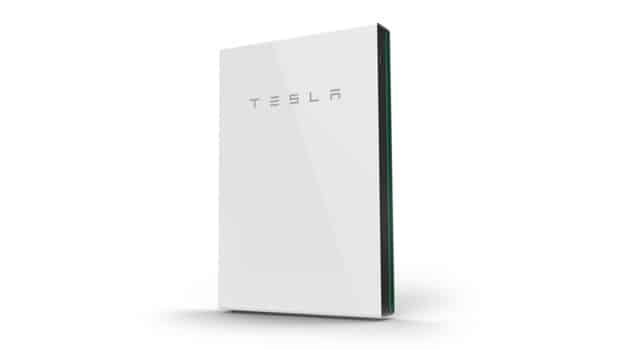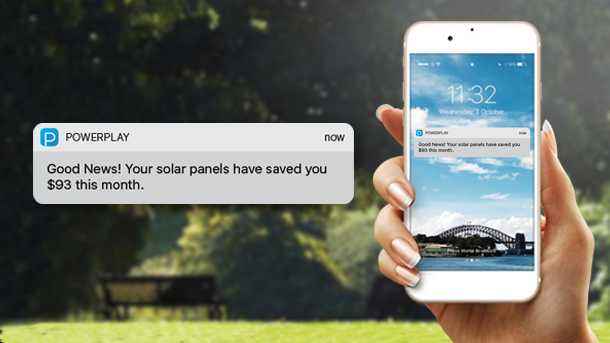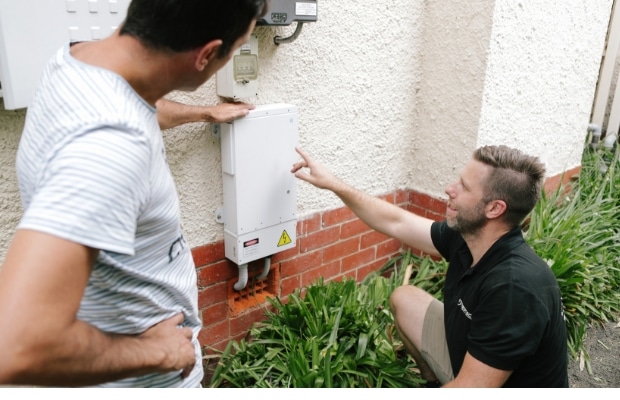This Energy Matters article is about building energy efficient homes. We’ve divided it into four parts, covering energy sources, monitoring and voltage.
The first part is about solar panels, the second on home battery energy storage, and the third about energy monitoring system PowerPlay. Finally, we look at a new home voltage regulation device called Edge IQ designed to lower the amount of power your appliances use.
But first, let’s kick off with a concise guide to Australian standards for energy efficient homes.
Nationwide House Energy Rating Scheme
The Nationwide House Energy Rating Scheme, or NatHERS, is a star rating system. It gives a mark out of ten that rates the energy efficiency of a home, based on its design.
NatHERS provides a ‘measuring tape’ to estimate a home’s potential heating and cooling energy use. It helps to make Australian homes more comfortable, and residents save on energy bills. Good design can reduce the amount of energy needed to keep a home comfortable with no or little additional construction cost. What’s not to like? Now, onto the Big 4 building recommendations.
Building energy efficient homes
1: Solar generation: solar panels
Install solar panels with a decent battery system and you benefit in a number of ways. You maximise the energy from your solar panels by capturing the solar energy that would normally be sent to the grid. Save it for your own usage later in the day. Offset the increased cost of power used during peak times, such as during the evening. Save money by storing energy from the grid overnight when prices are low. Use that energy during peak times when prices are high.

In the future, regulations will require solar by law. In fact, California is becoming the the first American state to require all new homes to have solar power.
SPECIAL OFFERS
Solar energy is one of the best investments around, so make the most of your rooftop real estate. Wherever you are in Victoria, or in the country, we can help you with the right solar power system. Buying and installing solar panels doesn’t have to be a headache. Thousands of households in Melbourne and throughout Victoria have joined the rooftop revolution with advice from Energy Matters in building energy efficient homes, starting with a home solar power system.
2: Energy storage: home battery
Linking up your solar panels with an efficient battery system is essential. One of the main innovations in batteries is the Tesla Powerwall 2, a lithium-ion battery system for homes and businesses.

One large limitation of solar photovoltaic systems is that they don’t generate electricity at night. This means they’re still dependent on connection to the grid for night-time power If the solar array or inverter fails. But the Tesla Powerwall 2 home battery can store the solar-generated electricity for later use.
Let’s look at some of the many advantages that solar power and batteries have.
Getting off the grid helps you maximise energy consumption. It protects you from power outages so you don’t have to worry about things like your frozen food going off. If you’re in rural Australia, having your own solar panels and battery back-up means not relying on a connection back to the grid for your energy source.
Reduce your carbon footprint by removing your home completely off the grid and making it self-sufficient. Also, solar panels and batteries means no generator so no noise, which means happy neighbours.
Cut costs. Instead of paying the fees that the electricity retailers want to charge you, you can be self-sufficient with your electricity generation and save hundreds, even thousands of dollars a year. Believe it or not, it’s an affordable option to get solar systems installed into your home. While there have been government incentives in the past to install a solar system.
TESLA POWERWALL 2 OFFERS
As mentioned, Tesla Powerwall 2 is the next generation, revolutionary home battery for Australia that helps you make the most of the electricity generated by your solar panels.
Tesla Powerwall 2 is a fully integrated battery that powers your home when your solar panels aren’t producing enough electricity to supply your appliances – for example, in the evenings. With a huge demand for Tesla Powerwall 2 in Australia, we suggest you get a place on the Tesla priority installation list and reserve one today!
3: Energy monitoring: PowerPlay
So, you’re all set up with your sleek solar panels and your top-of-the-range battery but you still need to think about energy monitoring. Building energy efficient homes is one thing, but without good information, you can’t have good management.
No one knows more about your electricity use than your home itself. But until now it’s been impossible to access this information because it’s coming from different sources, like your solar panels, home battery or the main grid. Now apps such as PowerPlay change the power game to give you a winning hand in the fight to cut power bills.

The PowerPlay energy monitoring and control system gives you feedback and sound advice on your home electricity use. At any time of the day the PowerPlay app instantly displays the information you need to get lower electricity bills.
Not only that, PowerPlay keeps a record of usage over time so you can compare today’s usage with last month’s or last year’s. With updated functions and a new look, PowerPlay is ready to take on the challenge of making your home energy efficient.
4: Voltage regulation: EdgeIQ
The massive increase in wind farms and rooftop solar in Australia over the last decade means the grid now has power feeding in from many different sources. This makes maintaining steady line voltage difficult. Distribution network managers have not kept pace with changing conditions. As a result they have not introduced technology that could solve these issues.

If grid voltages are running higher than 250 volts, your overall solar benefits will be decreased by up to 15%. Running high voltages into your home also means you need to use more of your solar power to supply your own needs. This leaves less solar power to sell back to the grid.
But don’t panic, help is at hand. Edge Electron’s EdgeIQ is a globally-patented voltage optimisation device which gives you full visibility of how your solar system is performing. It reduces your electricity consumption, increases your solar yield and reduces your carbon footprint.
The EdgeIQ works by keeping home voltages at a steady 220 volts.
Neal Stewart, co-founder and CTO of Edge Electrons told Energy Matters that data shows customers could save 8-10 per cent on their electricity bills if home voltage remained at 220-230 volts.
To conclude, when building energy efficient homes it is essential that solar energy systems are taken into account. It’s highly likely this will become standardised in Australia in the future as it has been in California.
So, get ahead of the pack and make sure you have a solar and battery system up and running that will help you save on bills and help the environment.








































